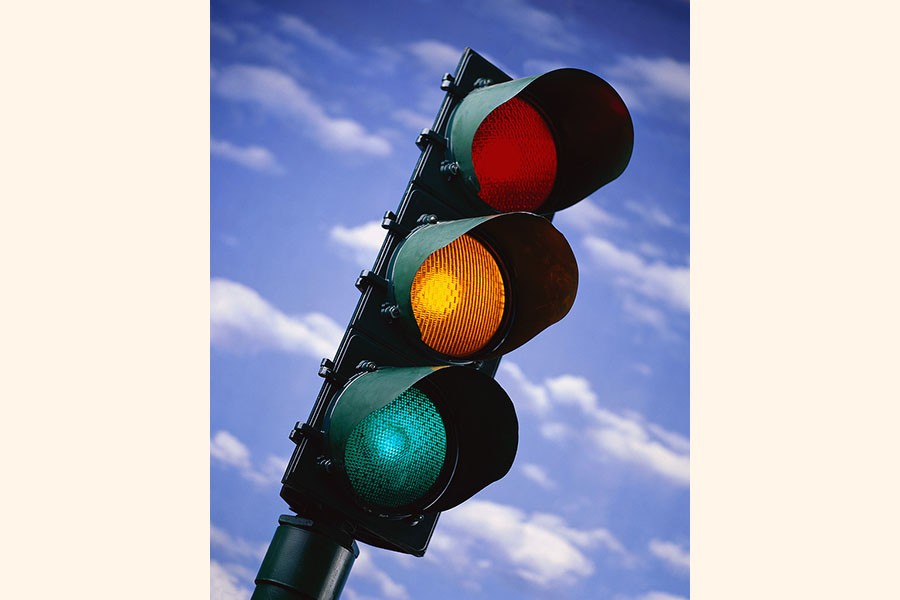Yet another experiment is in the offing with the city's traffic signalling system. Surprise, surprise!
Relevant agencies, together or individually, have developed a habit of doing such experimentation and waste some amount of taxpayers' money. This is done to prove their existence, on the one hand, and create a few opportunities for some people to earn a few extra bucks, on the other. It may sound too harsh. But this has been quite a common practice in the government agencies.
It is almost impossible to make a proper account of the changes made and traffic signals installed at the road intersections of Dhaka city since independence. People have seen remodelling of the traffic roundabouts and types of traffic signal lights, including their going digital from an analogue system.
But nothing has worked. Digital signalling system has proved as ineffective as the analogue one. Traffic policemen's stretched hands have always proved to be irreplaceable. Why? Answer to the question is also known to most people.
Against this backdrop, the Dhaka Transport Coordination Authority (DTCA) has come up with a pilot project to install digital traffic signal at four important road crossings at Gulshan-1, Mohakhali, Paltan and Phulbaria.
These signal lights, according to a report published in this paper some days back, will be operated through a control system from where the lights will be changed with fixed-time counting of vehicles. The signal lights fitted with special type of close-circuit cameras will count cars of each lane of the road and guide the control room to calculate time for passing traffic of the lanes.
Even the cameras will track the cars violating the traffic signals to bring them to book by the law enforcing agencies. Upon successful implementation of the pilot project, the DTCA would hand over the control system to the Dhaka Metropolitan Police (DMP). The financing for the pilot project will come from the Japan International Cooperation Agency (JICA).
Not long ago, in 2004 to be exact, the Dhaka City Corporation, when it was a single entity, installed four types of signal systems at 59 city intersections with financial support from the World Bank.
Most of these signal lights are either out of order or have been kept inoperative with hand-signalling system reigning supreme.
It may not be out of place to say that the traffic signalling system in Dhaka city, barring the cantonment area, has virtually collapsed. Vehicles, apparently, exercise some restraint because the traffic policemen usually come out of the nearby canopies and put up a physical barrier by stretching their hands. The situation could have been otherwise with only traffic lights in place.
In most cases, people driving the vehicles, mechanical or otherwise, become so impatient because of long waits that they tend to violate traffic signals. The reasons for traffic jams do not require any elaboration. Volumes have been said and written, but the situation has only turned worse. None knows for sure what remains in store in the future.
The slapping of fines on the high-profile violators of traffic laws at the Sheraton crossing a couple of days back had hit the newspaper headlines. No matter what prompted the policemen to take the actions, they have done a commendable job. The offenders do encourage other people to break the law.
But such violation does only highlight the enormity of the problem with the city's transportation system. Everybody is affected. A bus-riding common man or a man sitting in a car is suffering on the streets because of the unbearable traffic jams. The only difference is that the man in the car is insulated from heat and dust.
The experimentation with new traffic lights does not carry any meaning. The government is after bigger things, including introduction of mass rapid transit. The MRT might be of some help. But two steps in particular --efficient road transport system and unbiased and strict enforcement of provisions of motor vehicle act -- could prove even more helpful. The introduction of efficient and air-conditioned bus services in all city routes is likely to encourage many middleclass people to keep their cars at homes on the working days and avail of bus services. Strict enforcement of MVA would also force a large number of vehicles to go off the roads.


